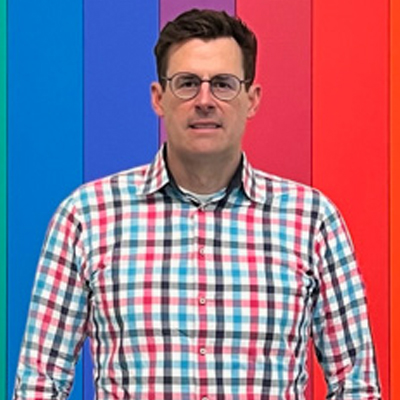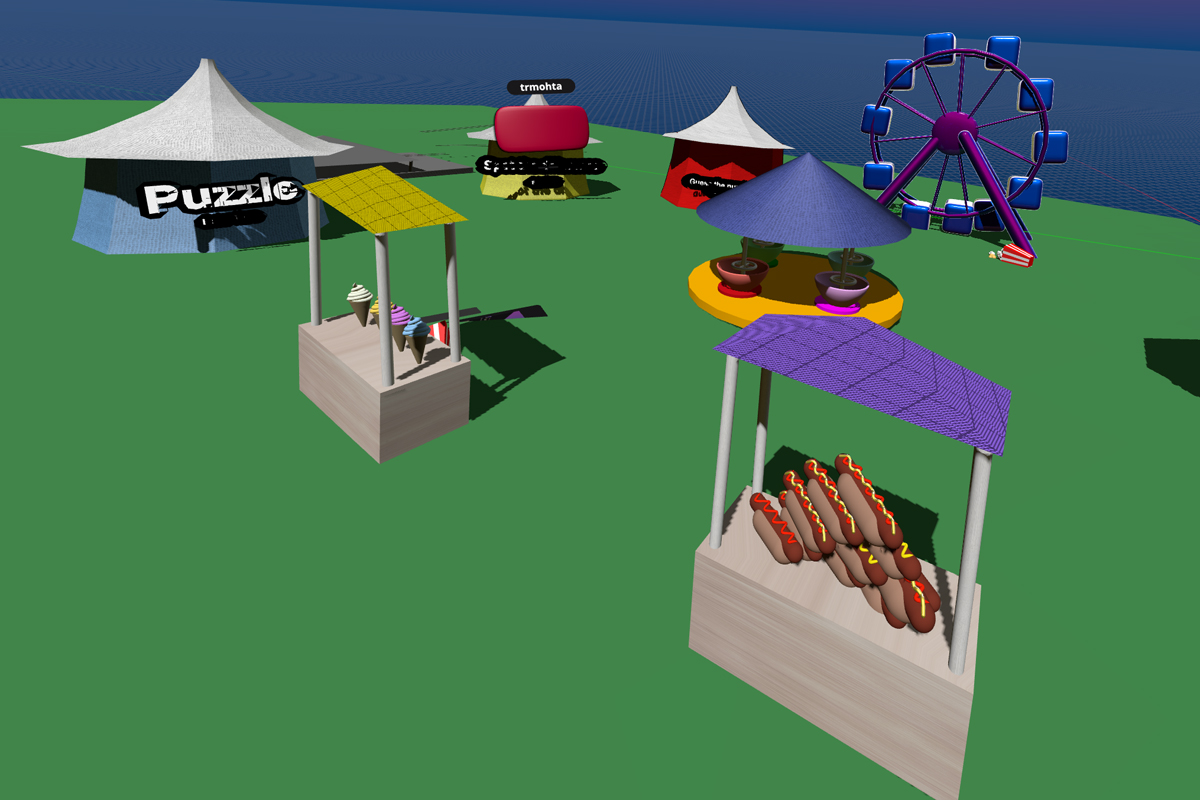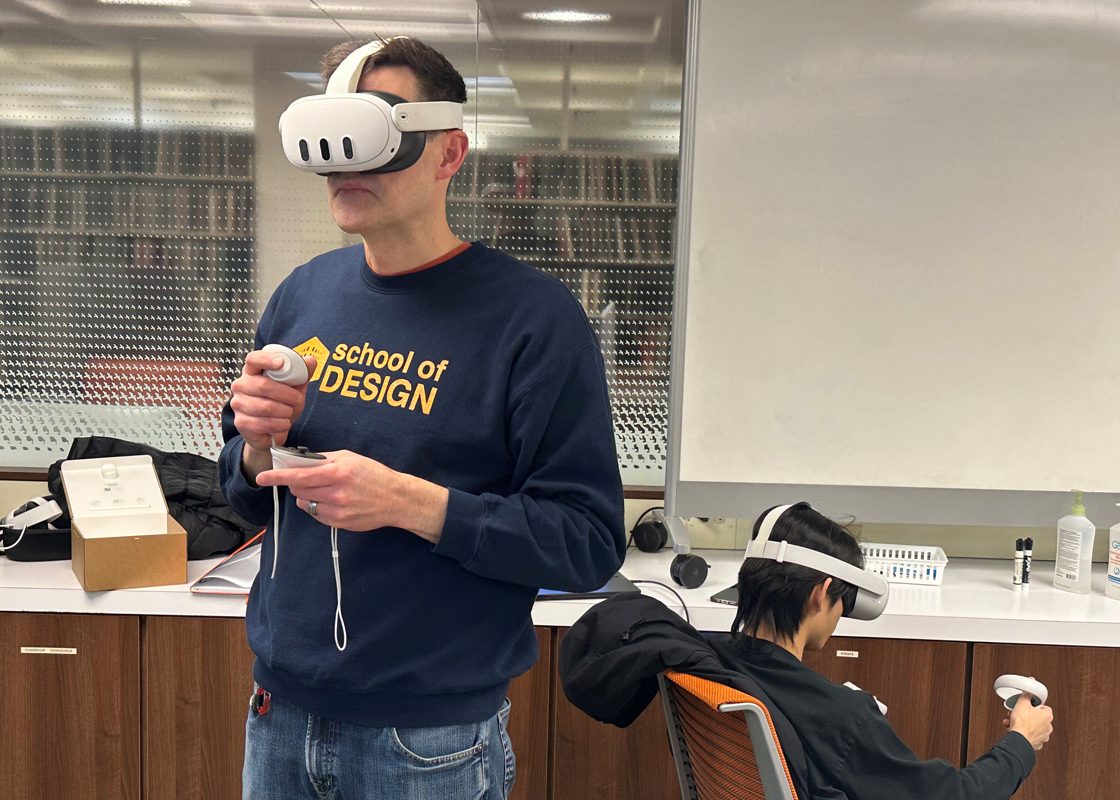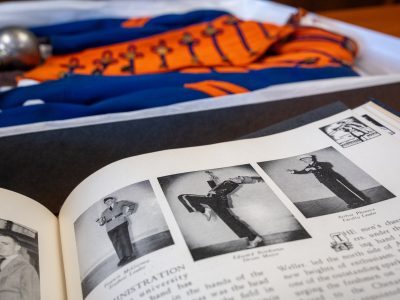Designing the Collaborative Classroom of the Future
On the fourth floor of Bird Library sits what Associate Professor of Industrial and Interaction Design Ralf Schneider hopes will be the interactive classroom of the future.
Walking by the Digital Scholarship Space (DSS), located in Room 458, this particular classroom has a rather unassuming look, with its mix of chairs, tables and white boards.
But what makes Schneider’s Designing In Virtual Reality class in the College of Visual and Performing Arts truly unique is how it blends technology with innovation and collaboration to create an interdisciplinary learning environment.
Utilizing Meta Quest 3 virtual reality (VR) headsets with Gravity Sketch, a software program that allows users to sketch and draw in virtual reality, students from the fashion, interior design, industrial design and interaction design fields come together to create three-dimensional (3D) models, helping designers and artists express and fine-tune their ideas in a virtual space while encouraging real-time collaboration.

“This class connects the two-dimensional world with the three-dimensional world, allowing students to be creative in an immersive, collaborative, three-dimensional space. It’s an exciting way for students to learn and work with each other,” Schneider says.
By incorporating VR sketching into the design process, Schneider says his students learn to revolutionize the way they conceptualize, iterate, collaborate on and communicate their projects and ideas, streamlining the design process while producing a more immersive and engaging experience for both the designers and their clients.
“This is definitely the classroom of the future. It’s a game-changer to be able to design and work collaboratively in design fields in the same virtual space without needing to physically be in the same location,” says Sofia Hom ’27, an industrial and interaction design major in the School of Design in the College of Visual and Performing Arts.
Students wear their untethered VR headsets while engaging with Gravity Sketch, connecting and transforming their workflow from two dimensions into three dimensions while also streamlining and improving on past design processes.

Previously, designers would sketch their ideas in side views, top views, front views, orthographic projections—a way of representing a 3D object using multiple 2D views—and perspective views—creating a realistic representation of a 3D scene on a 2D surface—and, ultimately, translating those projects into a 3D model before bringing their object to life.
But unlike in the physical design space, Gravity Sketch enables students to easily make mistakes, learn from those missteps and then go back, deconstruct their project and fix it thanks to the lessons learned along the way.
Along the way, Schneider says his students learn about spatial visualization, the ability to mentally manipulate and understand the spatial relationships between objects and spaces when looking at a 2D figure and imagining what it would look like in 3D.
This semester, Hom and her classmates familiarized themselves with the possibilities of the software by creating a VR rendition of their cellphone home screens. They then designed an everyday object like a toothbrush or a tea kettle, collaborated with their peers on developing an immersive public space like a carnival, and took an existing portfolio project and used Gravity Sketch to transform it into the VR landscape.

“There’s a lot of freedom we’re given to explore and experiment with our designs. You’re able to not just draw something in a flat plane, but you can draw in three dimensions, and then you can hand over your drawing to someone else in the VR space,” Hom says. “This process allows everyone involved to look at the project and make real-time changes.”
This is the first time Schneider’s class has been taught on campus. Schneider credits School of Design Director Emily Stokes-Rees, the DSS and the University’s Information Technology Services—which provides the 22 VR headsets and ensures they are fully charged before class and cleans and charges them up afterwards—for making his class possible. He says the yearly elective will be taught again in the fall and encourages all interested students to enroll.
“This class is a predictor of what students will encounter once they graduate,” Schneider says. “It’s a very powerful skillset for students to present in their portfolio as a designer because it shows you’re curious about future technologies and the modern ways of collaborating creatively.”



